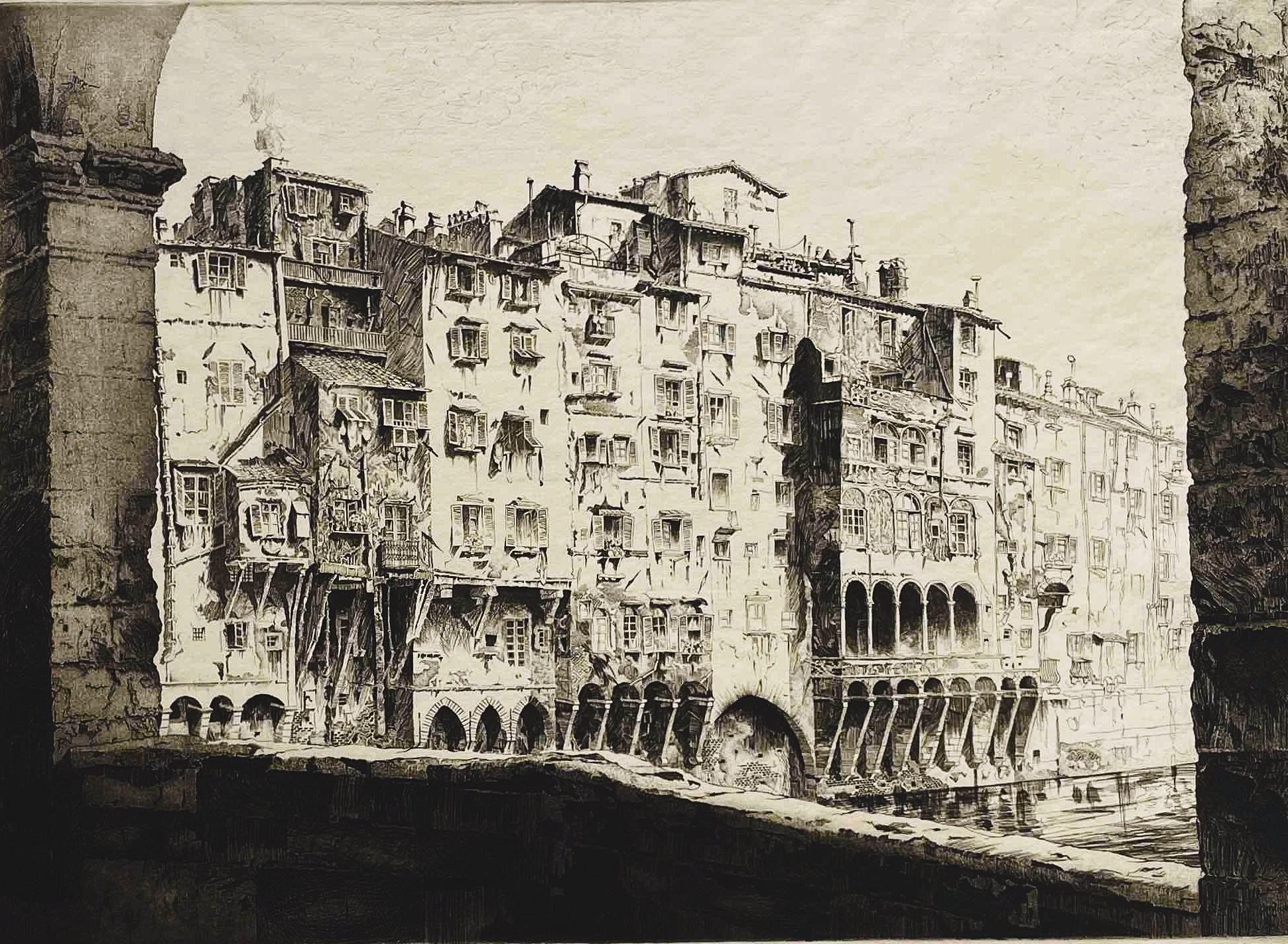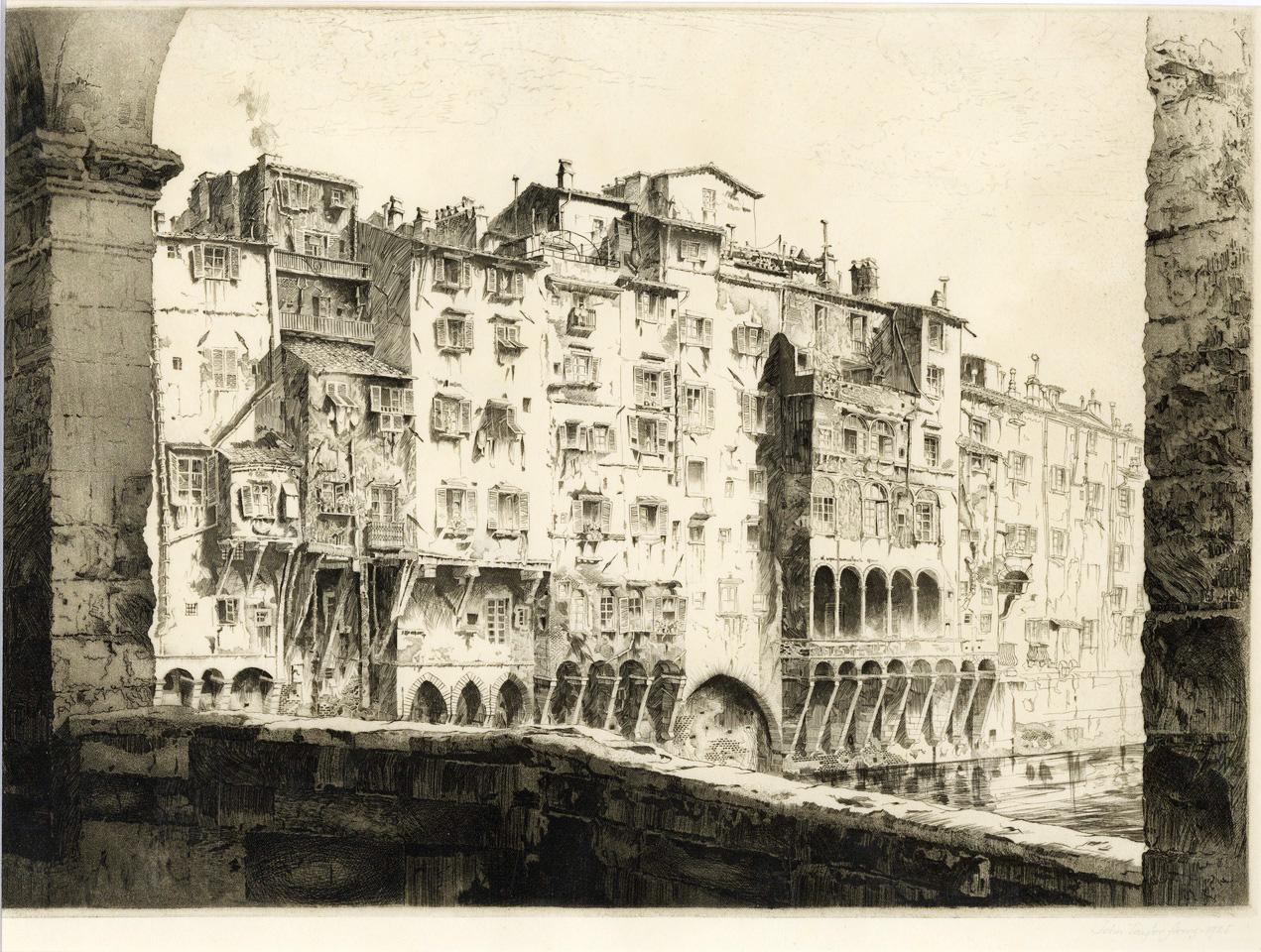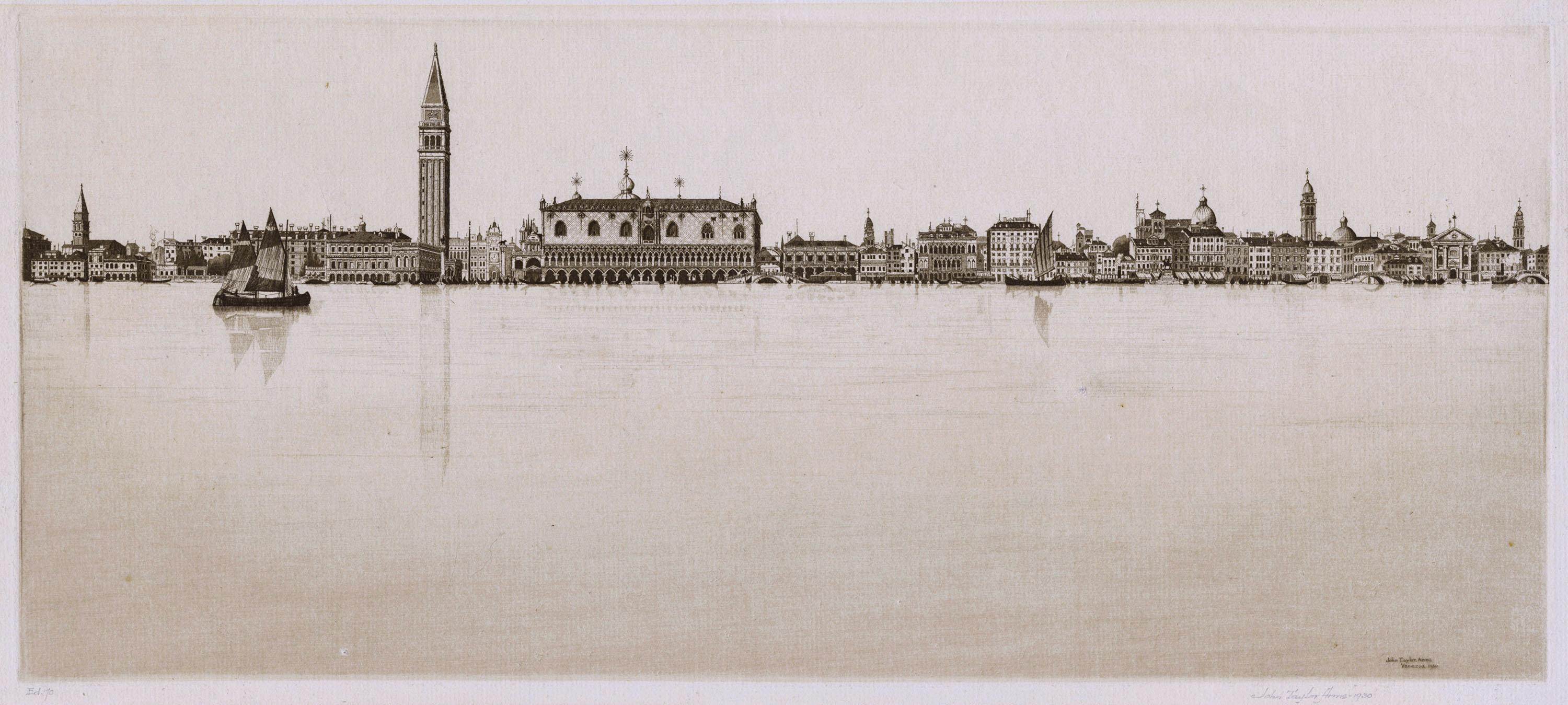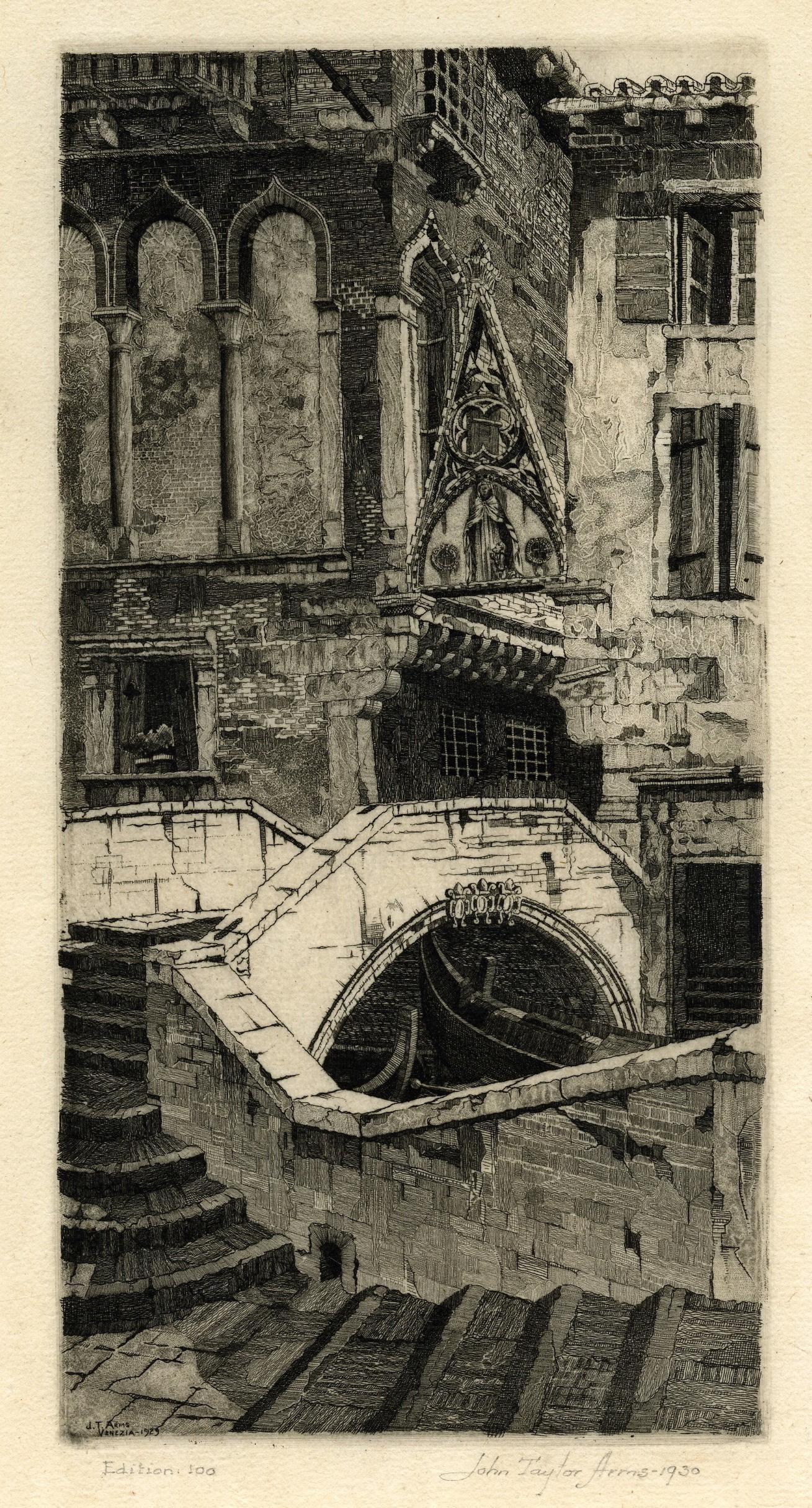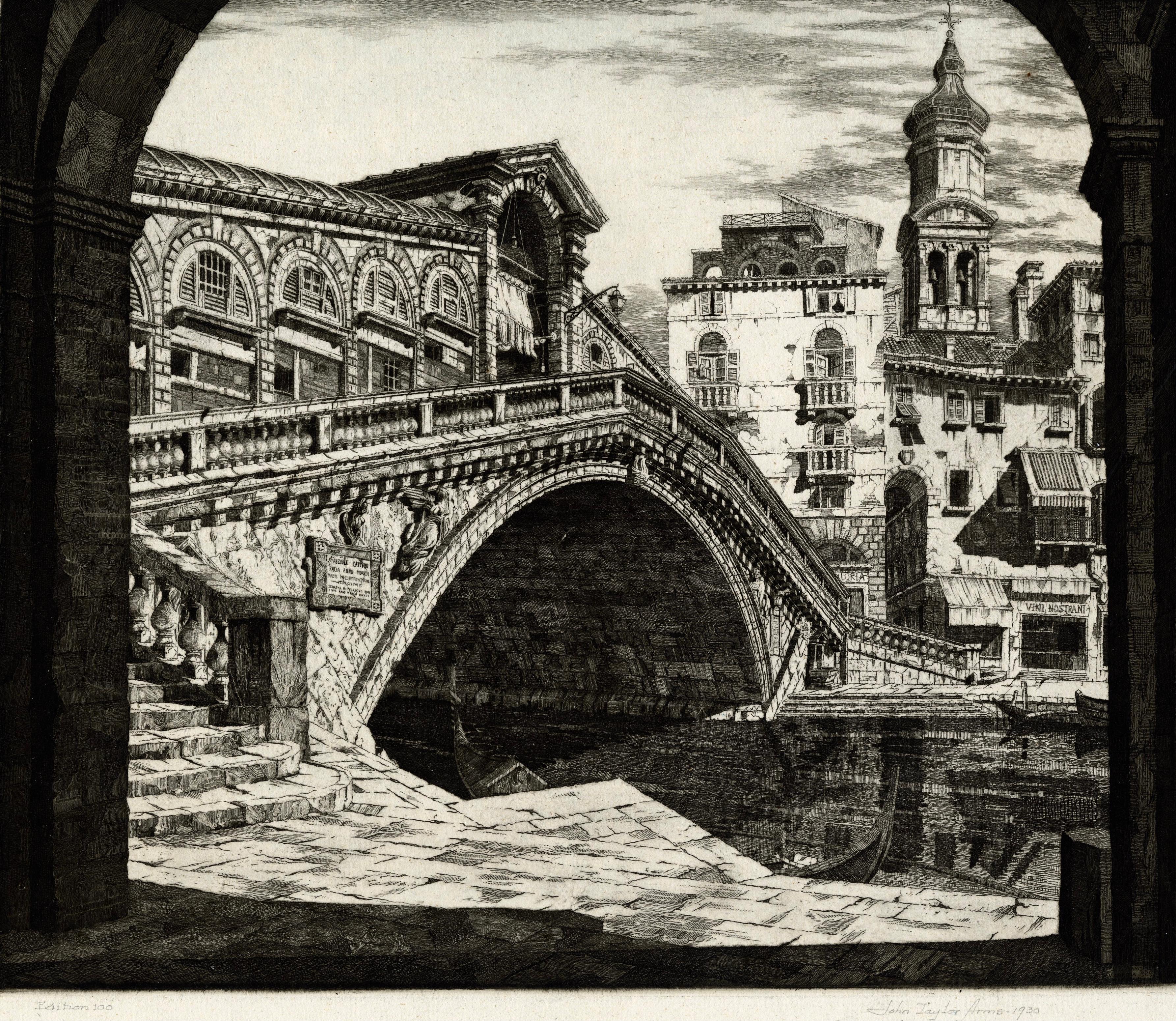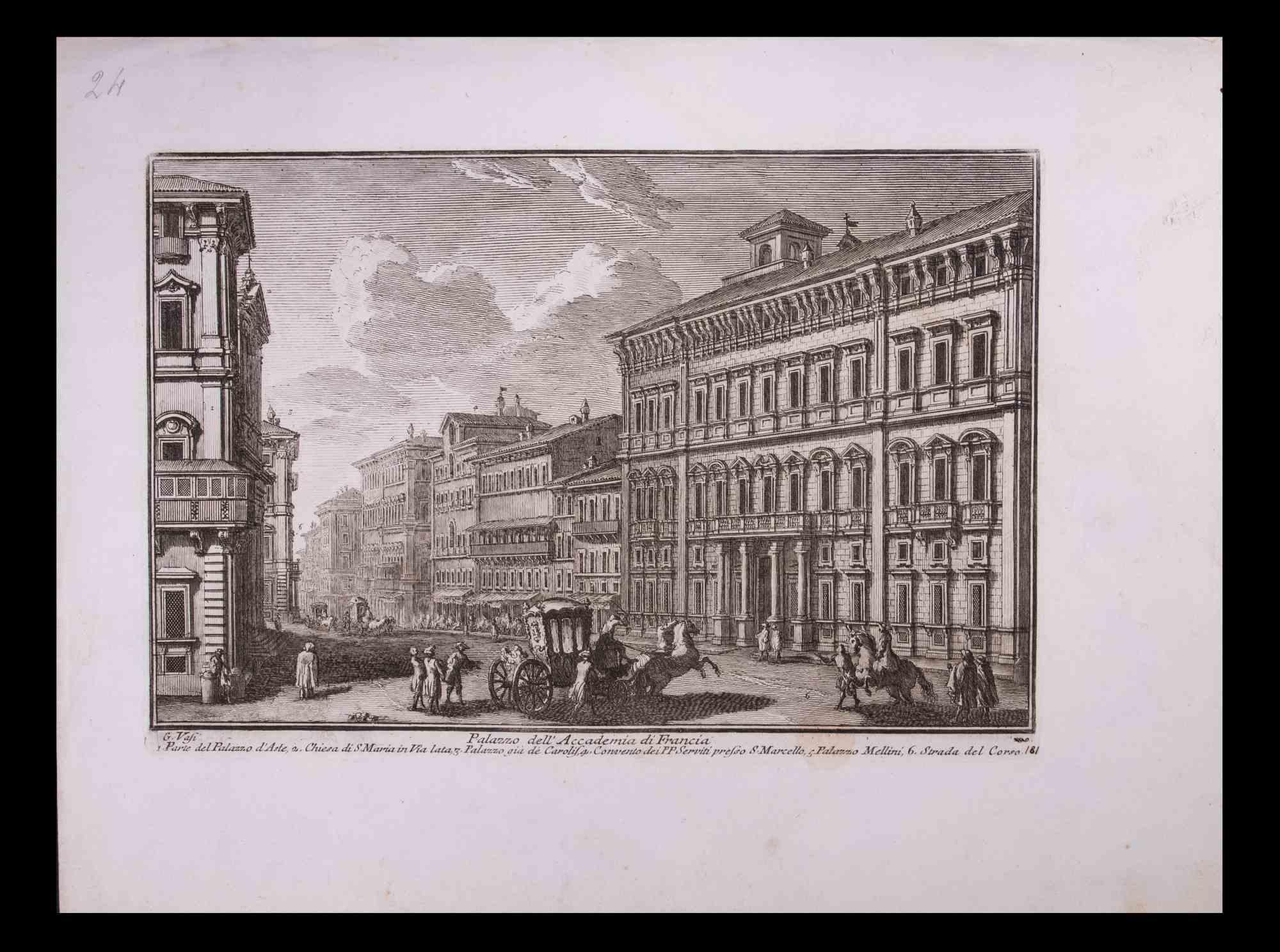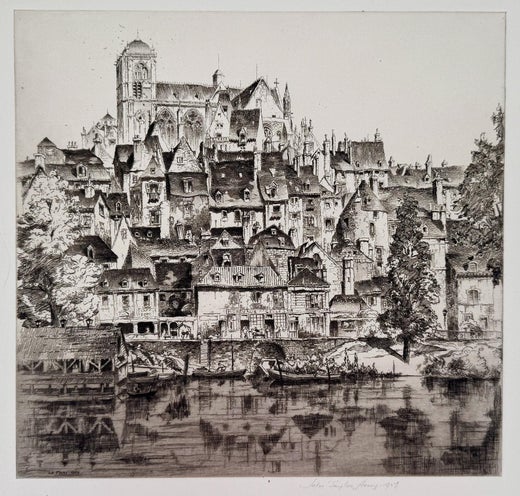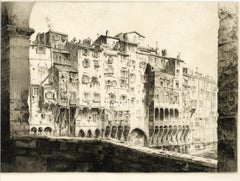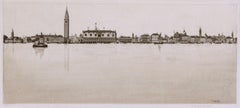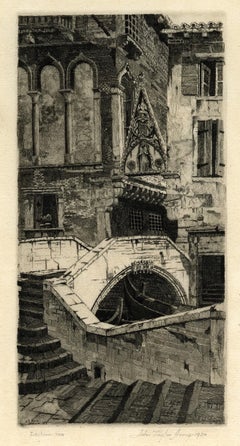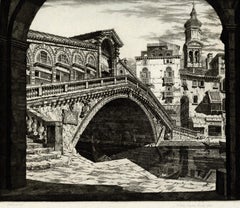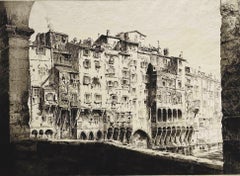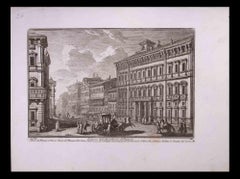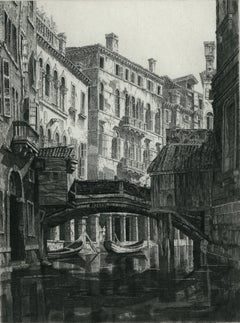Palazzo dell'Angelo
1931
Etching and drypoint on cream-colored, handmade laid paper with deckle edges, 7 1/4 x 6 3/4 inches (185 x 171 mm), edition of 100, full margins. Signed, dated and numbered "Ed. 100" in pencil, lower margin, second state (of three). Printed by Henry Carling, New York. Extremely minor mat tone and some inky residue in the top right corner, all unobtrusive and well outside of image area. An exquisite impression of this intricate image, with astonishing detail, and all the fine lines printing clearly. The image represents the first print which Arms printed on his own handmade paper. Framed handsomely with archival materials and museum grade glass in a wood gilt frame with a flower and garland motif.
Illustrated: Dorothy Noyes Arms, Hill Towns and Cities of Northern Italy, p. 180; Anderson, American Etchers Abroad 1880-1930; Eric Denker, Reflections & Undercurrents: Ernest Roth and Printmaking in Venice, 1900-1940, p. 116.
[Fletcher 233]
Born in 1887 in Washington DC, John Taylor Arms studied at Princeton University, and ultimately earned a degree in architecture at the Massachusetts Institute of Technology in 1912. With the outbreak of W.W.I, Arms served as an officer in the United States Navy, and it was during this time that he turned his focus to printmaking, having published his first etching in 1919. His first subjects were the Brooklyn Bridge, near the Navy Yard, and it was during his wartime travel that Arms created a series of extraordinarily detailed etchings based on Gothic cathedrals and churches he visited in France and Italy. He used what was available to him, namely sewing needles and a magnifying glass, to create the incredibly rich and fine detail that his etchings are known for. Upon his return to New York after the war, Arms enjoyed a successful career as a graphic artist, created a series of etchings of American cities, and published Handbook of Print Making and Print Makers (Macmillan, 1934). He served as President of the Society of American Graphic Artists, and in 1933, was made a full member of the National Academy of Design.
In its most modern incarnation, Palazzo dell'Angelo was constructed in or around 1570. The building, which has a rich and storied history, was erected upon the ruins of an earlier structure which predates the Gothic period. Some remnants of the earliest features of the residence were most certainly still visible when Arms visited, as they are today. Having a background in architecture, there's no question that Arms was moved by the beauty, history and ingenuity represented in the physical structure. One thing specifically gives away Arms's passion for the architecture, and that is the fact that he focused on the building's Moorish entranceway, balustrade, and two mullioned windows, and not on the curious Gothic era bas-relief of an angel nestled into the facade of the building, after which the structure is named. The sculpture itself doesn't appear in Arms's composition at all, despite the fact that it is the feature of the building that is most famous in its folklore. Arms instead focuses on the oldest portion of the architecture, even documenting some of the remnants of a fresco, and a funerary stele for the freedman Tito Mestrio Logismo, and his wife Mestria Sperata (visible above the water level, to the left of the door, behind the gondola), which was first described in 1436.
Among the many notable bits of history regarding the Palazzo, it has been documented that Tintoretto painted frescos of battle scenes on the facade of the building. The paintings have been lost to time and the elements, but not entirely to history. The empty frame-like structure appearing in the brickwork to the left of the doorway, an area which now lays oddly bare, would have originally housed a fresco, but now sits like a ghost where an untold number of eyes once gazed at something beautiful. Most famously, however, is the story of the origin of a small hole which appears in the facade of the building, atop the figure of the bas-relief angel. Folklore has it that in 1552, Friar Matthew Bascio was invited to dinner by the Pallazzo’s then resident, Iseppo Pasini. Pasini was a very successful, albeit unscrupulous attorney who made his fortune exploiting the poor. Pasini's exploits were so egregious it was rumored that he was perhaps under the influence of an evil spirit. The disturbing legend says that to his complete surprise, when Friar Bascio was seated to dine that night, he was waited upon by Pasini's bewitched pet monkey, who he recognized immediately as the Devil himself. Upon this recognition, Bascio was moved to squeeze the table cloth with his hand, and saw that blood had leaked out of the linen. In this moment, he cast the demon out of the house, and during its departure, the Devil made a hole in the wall through which he fled. It is said that the angel was placed in the facade below the hole to prevent the spirit from reentering. The hole is visible to this day above the angel, on the building which still stands along a small canal behind the Piazza San Marco. After the building's Neoclassical remodel, it served at the the senatorial residence of Italy's noble Ratta family.
Arms's Palazzo dell'Angelo was awarded the Member's Prize at the 22nd Annual Exhibition, Chicago Society of Etchers, Art Institute of Chicago, 1932.
